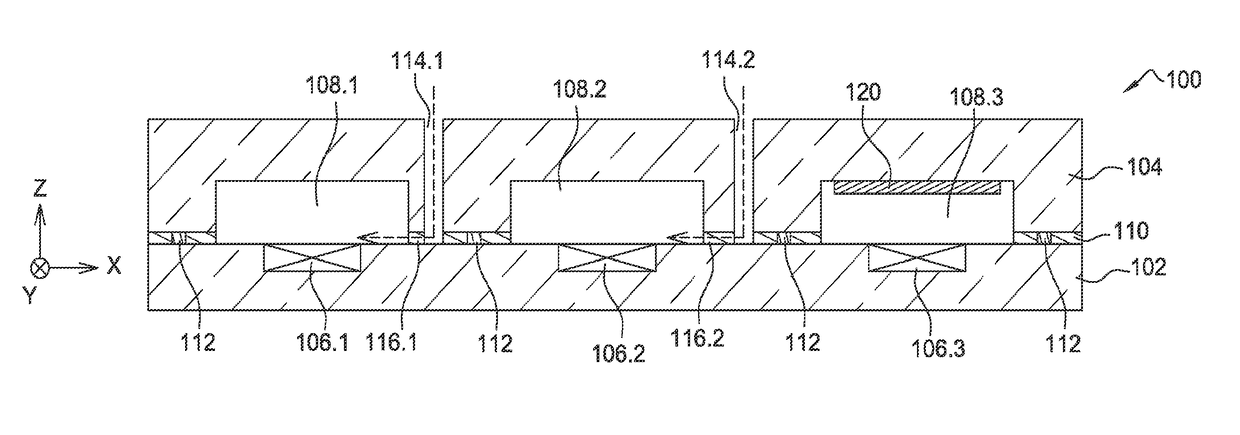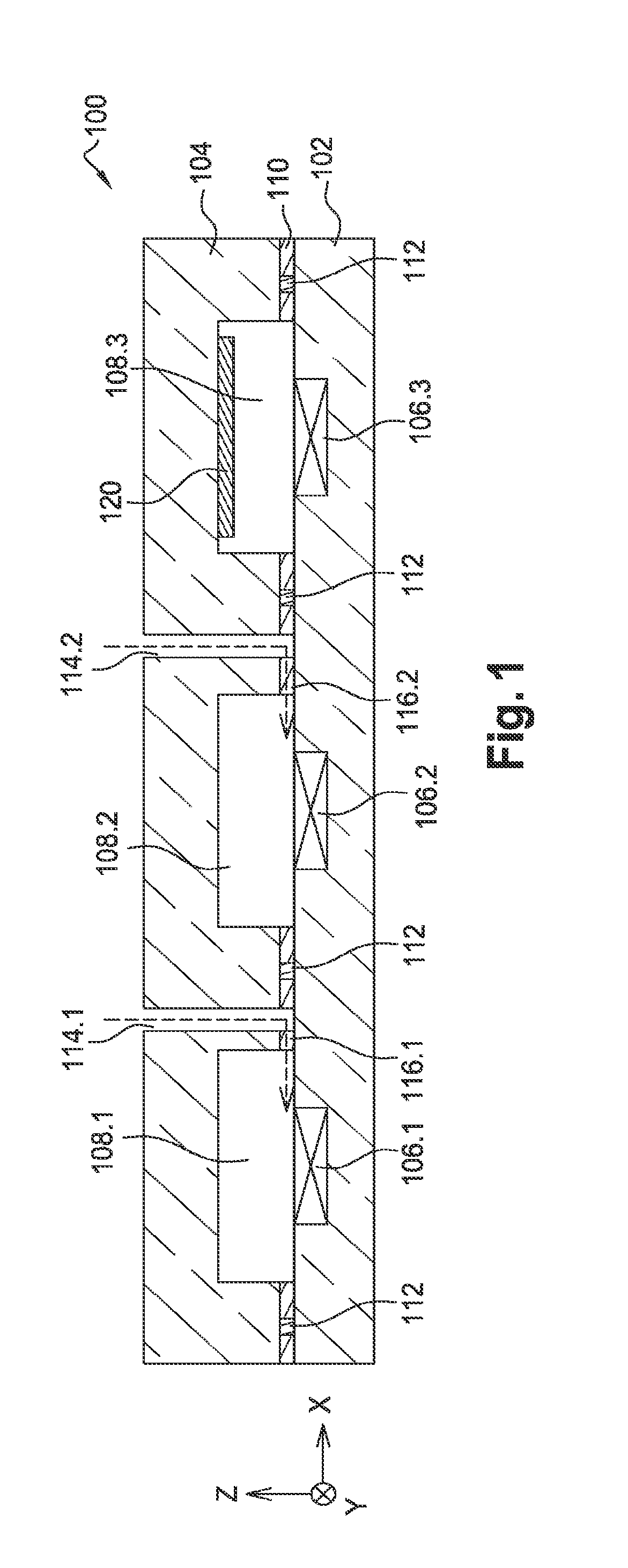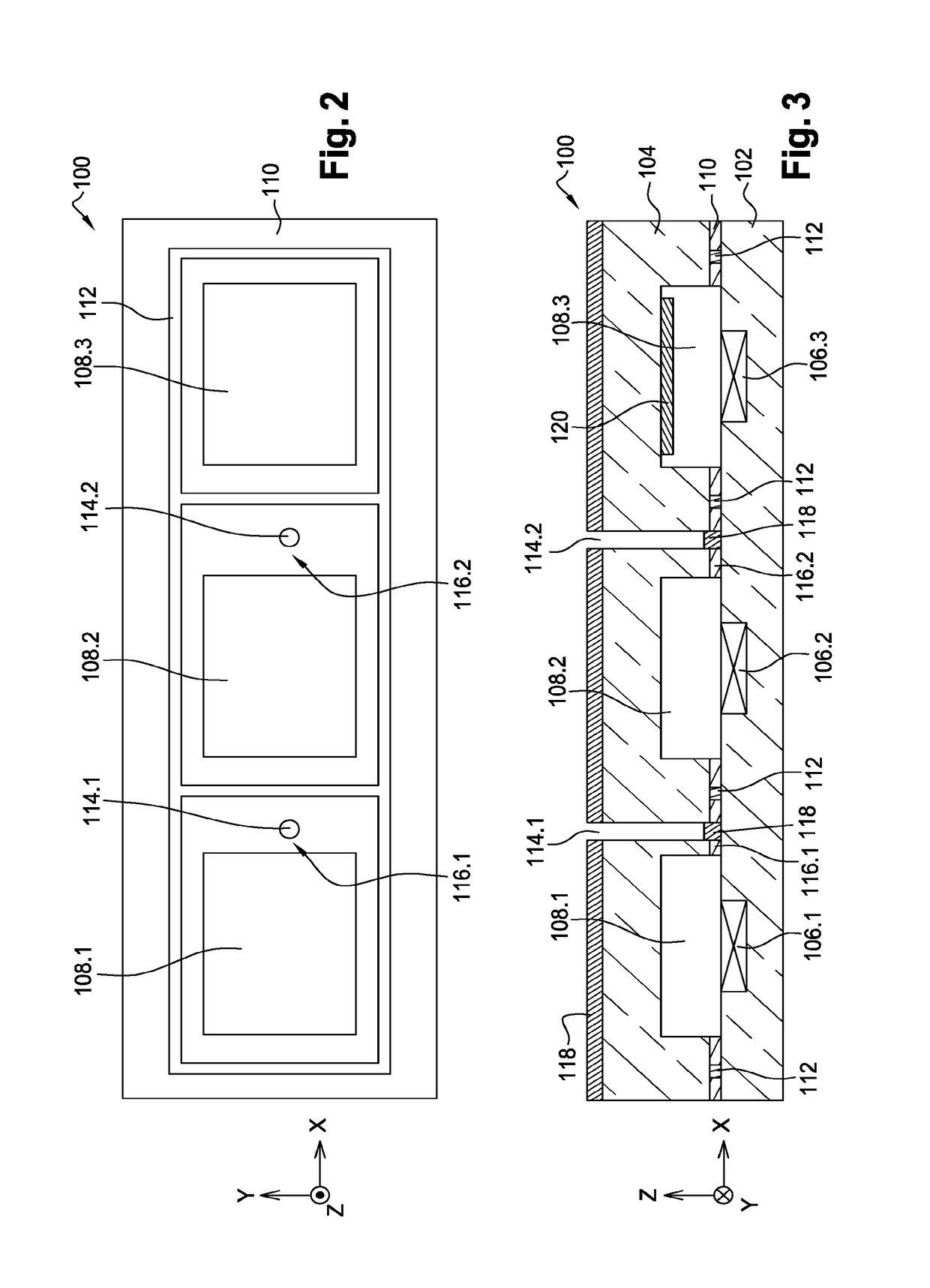Package structure including a cavity coupled to an injection gas channel composed of a permeable material
a permeable material and cavity technology, applied in the field of packaging, can solve the problems of difficult packaging and hermetically sealing cavities with very different residual pressures on the same substrate, difficult to achieve significant pressure differences between both cavities, and increase integration problems, etc., to achieve the effect of easy monitoring and higher pressure differences
- Summary
- Abstract
- Description
- Claims
- Application Information
AI Technical Summary
Benefits of technology
Problems solved by technology
Method used
Image
Examples
first embodiment
[0068]FIG. 1 is first referred to which shows a cross-section view of a profile of a packaging structure 100 according to a
[0069]The packaging structure 100 is herein formed by assembling a first substrate 102 with a second substrate 104. Both these substrates 102 and 104 each include a material non-permeable to a gas, advantageously a noble gas (corresponding to one type of noble gas or a mixture of different types of noble gases) to be injected in cavities of the structure 100, for example a semiconductor such as silicon.
[0070]One or more micro-devices 106 are made in and / or on the first substrate 102 which is used as a support for these micro-devices 106. In the example of FIG. 1, three micro-devices 106.1, 106.2 and 106.3 are made at a front face of the first substrate 102. The micro-devices 106 are each packaged in a cavity 108 (referenced 108.1, 108.2 and 108.3 in FIG. 1 respectively for each of the micro-devices 106.1, 106.2 and 106.3) formed between both substrates 102, 104....
second embodiment
[0101]A method for making the packaging structure 100 is described below in connection with FIGS. 6A to 6K.
[0102]This second embodiment differs from the first embodiment in that the gas is intended to be injected into the cavities through apertures and channels made in the first substrate including the micro-devices. As for previous FIGS. 5A to 5I, a single cavity 108 is shown in FIGS. 6A to 6K, even though the structure 100 may include several cavities 108 in which several micro-devices 106 are packaged.
[0103]In this second embodiment, the structure 100 is made from a first substrate 102 of the SOI (Silicon On Insulator)-type, or more generally of a semiconductor on insulator-type, including a solid layer 201, or support layer, the layer 110 arranged on the layer 201 and corresponding to the buried insulating layer (BOX) of the SOI substrate and the material of which (SiO2 for example) is permeable to the gas intended to be injected in the cavities of the packaging structure 100, ...
PUM
| Property | Measurement | Unit |
|---|---|---|
| Pressures | aaaaa | aaaaa |
| Pressures | aaaaa | aaaaa |
| pressure | aaaaa | aaaaa |
Abstract
Description
Claims
Application Information
 Login to View More
Login to View More - R&D
- Intellectual Property
- Life Sciences
- Materials
- Tech Scout
- Unparalleled Data Quality
- Higher Quality Content
- 60% Fewer Hallucinations
Browse by: Latest US Patents, China's latest patents, Technical Efficacy Thesaurus, Application Domain, Technology Topic, Popular Technical Reports.
© 2025 PatSnap. All rights reserved.Legal|Privacy policy|Modern Slavery Act Transparency Statement|Sitemap|About US| Contact US: help@patsnap.com



